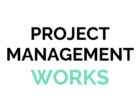Planning for any sort of project is complex and challenging. You are going to need to apply skills and knowledge from all areas of project management. This means handling a huge amount of information. Despite this, project planning is a logical and structured process. With that in mind, in this blog post, we are going to provide a quick start guide to project management planning.
- Determine how you are going to plan the project – The first step in the process is determining how you are going to plan the project. A project plan should not be started without a Project Charter being signed off. The Project Charter is the basis for all of your future efforts. Everything you do needs to be aligned with the charter. There are two key elements from the charter. The first is that you should assess the project’s nature, as well as the constraints, assumptions, and key requirements. The second important element is the pre-assigned resources.
- Decipher the organisational assets, processes, and policies that are needed – It is important to recognise that your project is going to exist in your organisation’s environment. There is going to be a preferred approach when it comes to project management that is already in place.
- Outline the contents of the project management plan – Draft the key points of each subsidiary plan, from risk management to scope management.
- Determine the detailed requirements – You need to clarify the non-functional and functional aspects of the project you are going to need to delivery. This can include reliability, safety, or performance characteristics, as well as requirements specifications and sketches.
- Decipher quality metrics, processes, and standards – Quality standards compliance needs to be part of your project scope.
- Create a project scope statement – This should include the product and project scope, as well as constraints, assumptions, what is not part of the project, acceptance criteria, and description of deliverables.
- Determine the project management team
- Assess what you need to outsource or buy – You need to figure out what parts of the project it will be beneficial to outsource.
- Create a Work Breakdown Structure (WBS) – This shows the full project scope in a diagram or hierarchical list.
- Create an Activities List – This outlines who is going to be performing what.
- Estimate the resources you are going to need
- Estimate the costs and the timeline for the project
- Determine the critical path – This is the sequence of project network activities that add up to the longest overall duration.
- Develop a schedule for the project
- Create a plan for improving your processes – A lot of project managers make the mistake of failing to continually address and improve on their processes.
- Determine all roles and responsibilities
- Plan stakeholder engagement
- Perform risk management
- Validate your plan – Go back to the beginning and repeat the process!
- Plan ways to measure performance
- Create a reward and recognition system
Hopefully, you now have a better understanding of what is entailed when it comes to project management planning. If you need more assistance with this, it is certainly worth looking into some guidance on project management training so that you can find the best project management training for you. A lot of the courses out there today will cover project management planning in thorough detail.

